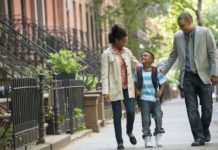The American biopharmaceutical company Gilead Sciences will soon start trials of an inhalable version of remdesivir, an antiviral drug that has shown promise as a therapeutic against the coronavirus in early trials, according to a statement released Monday.
Remdesivir is currently given intravenously, which restricts its use to hospital settings. “That’s been the limitation” with this drug, said Dr. Mangala Narasimhan, a pulmonologist and regional director of critical care medicine at Northwell Health.
Gilead’s inhalable version of the treatment would be administered through a nebulizer, a device that sends a mist of therapeutic liquid into the airway and is often used by asthma patients. Some nebulizers are portable; Gilead scientists hope that a more convenient treatment would be used by patients at various stages of infection.
Nebulizers “are commonly available” compared with IV equipment, said Angela Rasmussen, a virologist at Columbia University. “Pretty much every outpatient urgent care clinic has them. You could potentially treat somebody on the spot who has a positive test” for the coronavirus “but may or may not have symptoms.”
Remdesivir, which interferes with virus replication, is the first antiviral drug to show effectiveness against the coronavirus in human trials. It was given Emergency Use Authorization by the United States Food and Drug Administration on May 1, allowing physicians to deploy the drug intravenously in hospitalized patients with confirmed diagnoses of Covid-19, the disease caused by the coronavirus. However, this designation does not constitute formal drug approval, and remdesivir’s safety and efficacy are still being investigated in several clinical trials.
In a study published in May in the New England Journal of Medicine, remdesivir showed modest effects, shortening average recovery time to 11 days from 15 in hospitalized patients with the coronavirus. But the effects on mortality were negligible.
Buoyed by these early results, Gilead Sciences now hopes their inhalable iteration of remdesivir will help “stem the tide of the pandemic,” Daniel O’Day, Gilead’s chairman and C.E.O., said in a statement Monday. Beginning this week, healthy volunteers will be screened for participation in Phase I trials, which will test for safety. Covid-19 patients are expected to enter the lineup as early as August.
Convenience could end up being crucial to boosting remdesivir’s effects, Dr. Rasmussen said. The drug may be less effective when administered late in infection, after a patient has already sought treatment for serious symptoms. But under ideal circumstances, early doses of remdesivir could nip the disease in the bud.
Antivirals are generally thought to be most effective early in infection, before a pathogen can gain a strong foothold in the body and drive some of the most severe and life-threatening aspects of disease. The immune response to the coronavirus can be overzealous, at first rousing itself to clear an infectious invader, before spilling over and destroying healthy tissue in a misguided bid to protect the body. “If you could get rid of the virus before they develop those disease symptoms, you would probably have better clinical outcomes across many patients,” Dr. Rasmussen said.
Still, there is no guarantee that inhaled remdesivir will be an improvement over its injectable form, or even that it will be up to par. Dr. Narasimhan noted that it will be crucial to monitor how well, and how quickly, the drug is absorbed by the parts of the body that need it most. Trials will most likely require researchers to tinker with factors like dose, especially in patients with damaged lungs.
Generally speaking, nebulizers are “well-tolerated” by patients, including those with chronic respiratory conditions like asthma, Dr. Narasimhan said. But they can irritate some people’s airways, or make patients cough. Many physicians have been avoiding the devices out of concern that they could spread viral particles exiting the airways of infected patients into surrounding air, she added.
“It brings up a lot of issues,” Dr. Narasimhan said. “Can we use this safely? In what setting? Do we need to do this in isolation? We’d have to figure out a way to do it safely.”
Dr. Louis DePalo, a pulmonologist at Mount Sinai’s Icahn School of Medicine, noted that inhaled remdesivir therapies are “a worthy goal, but fraught with issues.” Prior treatments that have attempted the inhalation route, including a few delivering gene therapy or insulin, have failed before. Remdesivir can also be toxic if dosed improperly.
In the statement, Gilead also announced plans to manufacture two million more treatment courses of remdesivir by year’s end. The company also hopes to combine the antiviral with other drugs that can modulate the immune system, which, in later stages of infection, appears to be responsible for many of Covid-19’s ill effects. Among this group of immunity-targeting treatment are steroids like dexamethasone, which reportedly reduced deaths among a group of patients suffering from severe Covid-19.
[Like the Science Times page on Facebook. | Sign up for the Science Times newsletter.]
Source : Nytimes












